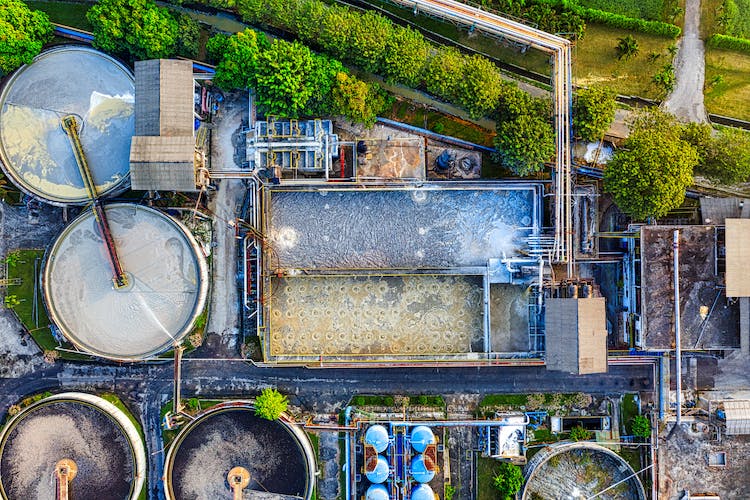

Artificial intelligence and machine learning are fundamentally transforming how industries operate, especially with regard to automation and big data processing. When applied to the waste management sector, these solutions can streamline the complete value chain, optimizing everything from garbage collection to smart recycling.
Since 1990, Americans have generated over 200 million tons of municipal solid waste a year. It’s evident in the number of overflowing landfills and cities with trash piling on their streets. The environmental impact has been increasingly worse.
Greenhouse gas emissions are rising, as are air and water pollution rates. AI can tackle these issues in several ways.
Trash collection is the first step in the waste management chain.
“AI-powered IoT sensors installed in waste bins track and provide real-time updates on the fill level, inside temperature and other relevant data.”
These smart bins monitor the amount of garbage to determine when a collection is necessary. Once the trash reaches a predefined level, an alert goes to the waste management trucks for pickup. This method helps prevent overloading and improper waste disposal at designated dump sites.
Using intelligent waste bins means trucks go out only when necessary, resulting in fewer vehicles on the road. Machine learning enhances the chain by analyzing data on waste disposal patterns, real-time traffic conditions and other key considerations to optimize pickup and drop-off routes.
This enables more efficient fleet management and saves costs across the board. Research shows deploying AI in waste logistics can result in over 36% reduction in travel distance and up to 28.22% time saved on the road. Fewer trucks also mean lower carbon emissions related to waste management.
Garbage picked up by waste trucks usually stops at the sorting facility to separate recyclable items. Traditional sorting techniques rely on manually sifting through the dump, which is time-consuming and subject to personnel availability. Worker shortage has hit the waste industry hard, with reports of some facilities having only 20% of open positions filled.
AI-powered solutions like advanced image recognition and machine learning can automate the process, increasing the speed and accuracy of sorting waste. The system scans garbage moving along the conveyor belt, picking items based on pre-trained algorithms.
“AI automation can also address inefficiencies in recovery systems, increasing the amount of recyclates salvaged and reducing the volume of waste headed to landfills.”
For example, the EPA estimates aluminum scraps account for 2% of all landfill volume yearly. Meanwhile, manufacturers pay over $800 million every year for recycled material. Training AI to specifically target scrap aluminum can eliminate waste and generate revenue.
There are special guidelines for disposing of hazardous waste. AI can play a critical role in ensuring the safe storage, transport and disposal of these toxic materials.
For example, recognition software can identify and classify different types of biohazard waste, ensuring they go to their designated end destinations. IoT sensors could also monitor hazardous materials, making sure they’re not at risk of spillage. This reduces the risk to workers who would otherwise be exposed.
All over the world, governments and organizations are deploying automation technologies to streamline how they collect and process garbage.
“AI automation can also address inefficiencies in recovery systems, increasing the amount of recyclates salvaged and reducing the volume of waste headed to landfills.”
Workers take pictures of the pile and the app meticulously categorizes them. The tool also recognizes safety issues, such as an employee without work gloves and alerts them.
In 2022, China leveraged Alibaba Cloud’s AI to make waste incineration more efficient. The AI monitored incinerations, automatically regulating temperatures and optimizing energy use. In the UK, Greyparrot is using AI to analyze waste processing and recycling facilities. It uses high-precision cameras and advanced recognition algorithms to examine trash moving on the conveyor belt in real time.
As machine learning and automation become more mainstream, there will be even more innovative applications in the waste industry.
Integrating AI into waste management holds immense promise for tackling the escalating global crisis. By optimizing garbage collection, planning routes and automating material recovery, AI-enabled systems can make the industry safer and environmentally sustainable.
Smart technology is no longer a luxury for businesses but a critical driver of efficiency, growth, and innovation. As technology…
The convergence of artificial intelligence and advanced machinery is poised to transform traditional industries in ways few could have imagined…
Artificial intelligence (AI) transforms material testing and performance forecasting by integrating advanced algorithms with traditional engineering methods. This convergence enables…
A clean and sanitized environment is vital to health care and lab ecosystems. Contaminants like dust, particles, debris, bacteria, viruses…
Artificial intelligence is increasing in various sectors, including photonics. AI enthusiasts in multiple fields are excited to see how its…
Automation is rising across all manners of manufacturing workflows. However, in many cases, robotics solutions can go further. Workholding is…